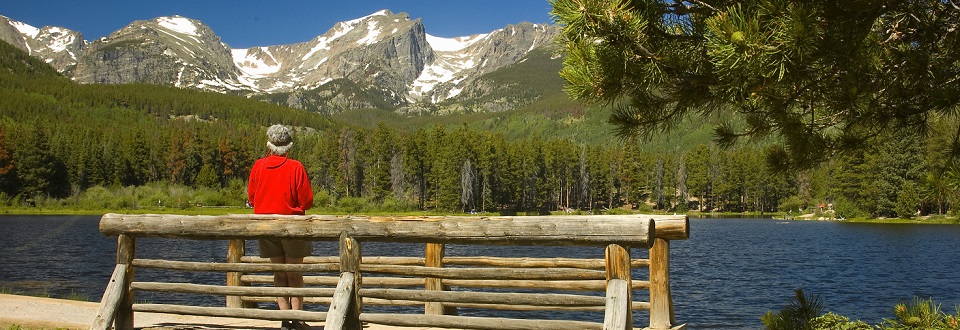
21 Apr Donor Screening
“Stop looking for rich people,” says fundraising author Andy Robinson. “Look for people you know. We’re surrounded by donors—they’re our neighbors.”
OK, so that’s mostly true. If we were Harvard, and setting our sights on raising $6.5 billion, we’d be looking for rich people.
But we’re not. We’re land trusts working on land conservation in our communities.
Fundraiser’s Almanac: April
- In Defense of Paper Filing Systems
- Renewing Lapsed Members
- Donor Screening
- Spring Appeal
In the late 1990s, I conducted a capital campaign for the Nature Conservancy’s Wisconsin Chapter. At the time TNC had 25,000 Wisconsin members – way too many to solicit in any kind of personal way – even with Board support. So where to begin?
I posed the question to my colleagues in similar positions around the country, and one introduced me to donor screening.
The essential premise of donor screening is the idea that Robinson seemingly decries – we’re looking for rich people. But here “rich” is relative. In an organized and systematic way, we look at everyone who already gives the land trust money. This last part is critical. We’re not looking for rich people who don’t yet know us. We’re looking for rich people who already know us and understand why what we’re doing is important. And on whatever economic scale our current supporters represent, we’re looking for the top 10 percent (or so).
My Conservancy colleague helped me frame a sophisticated screen starting with each member’s name and city (to help differentiate between David Allens in multiple cities). Beside each member’s name were 5 numbers starting with $10,000. Thus:
$10,000 $100,000 $250,000 $500,000 $1,000,000-plus
The screener’s job was to circle a number representing the largest amount s/he could imagine the prospect ever giving.
“How do you know?” was a common question. By where they live and how they live. By what kind of car they drive and what we know about what they give to other organizations.
Screening goes more quickly than anyone thinks it will, because of how few people anyone actually knows. On average, a screener can scan 1,500 names in about an hour. Even then, 25,000 names were too many to screen. So we broke up the 25,000 names into 8 regions and made it work. In each region, we had screening parties with snacks and adult beverages. We invited board members, volunteers, and major donors in each area to either host an event or participate in one. It was actually a tremendous team building activity that prepared us very well for the capital campaign ahead.
I describe all this because, in working with the screening process now for the last 15 years, I have reached several conclusions that will help you build a major gift program for your land trust.
First, the screening process I just described is way too complicated for most small organizations. I’ll describe the one I recommend most often in a little bit.
Second, screening isn’t something that you only do in front of a campaign – though it is critically important for campaigns. Screening should be done every 2-3 years or so. Your board members know more people by then, and they get sensitized to how people are giving in the community. In short they will recognize more donors each time they scan through the list. Also, your membership changes, with new people coming in each year, and so does your board.
And third, screening should be done regularly looking for board members in addition to donors.
So here’s the system and process I recommend:
- Start with a list of all your current donors. Define “current” any way you wish, but I usually go back three years, and sometimes five.
- Present the list alphabetically (or alphabetically by zip) with columns for first name, last name, and city/state.
- Ask your screeners to circle people they know personally. Star anyone they feel could give $10,000 or more, given an option of a three-year pledge. Mark each person the organization should consider a board candidate with the capital letter B.
Your board members should be asked to screen the entire list, but keep in mind that other people in the community could have ears to the ground in ways your board members do not.
For what it’s worth, I get pushback from two kinds of people on screening exercises: CPAs and attorneys. Both are concerned with betraying confidentiality. To these people, I offer the following perspectives:
- This is a qualitative exercise, designed to help prioritize the time we have to spend with donors and supporters. Nothing is intended to be considered quantitative, and no quantitative information will be collected.
- I would never ask anyone in such a position to betray a confidence. Please participate in the exercise. If you know something that you feel uncomfortable sharing, please just skip it. But you also know lots of people who are not clients. Share what you know or can guess about them.
For more information about the screening process, check out my Resources Page.
Do you have some experience with donor screening? If you have tips and/or tricks you have used, please share them here. If you’ll share, I’ll post all the ideas I am aware of on this blog.
-da
Related Posts:
Is Wealth Screening Worth the Money?
Photo credit: Nancy at Sprague Lake by Walt Kaesler.



Sorry, the comment form is closed at this time.